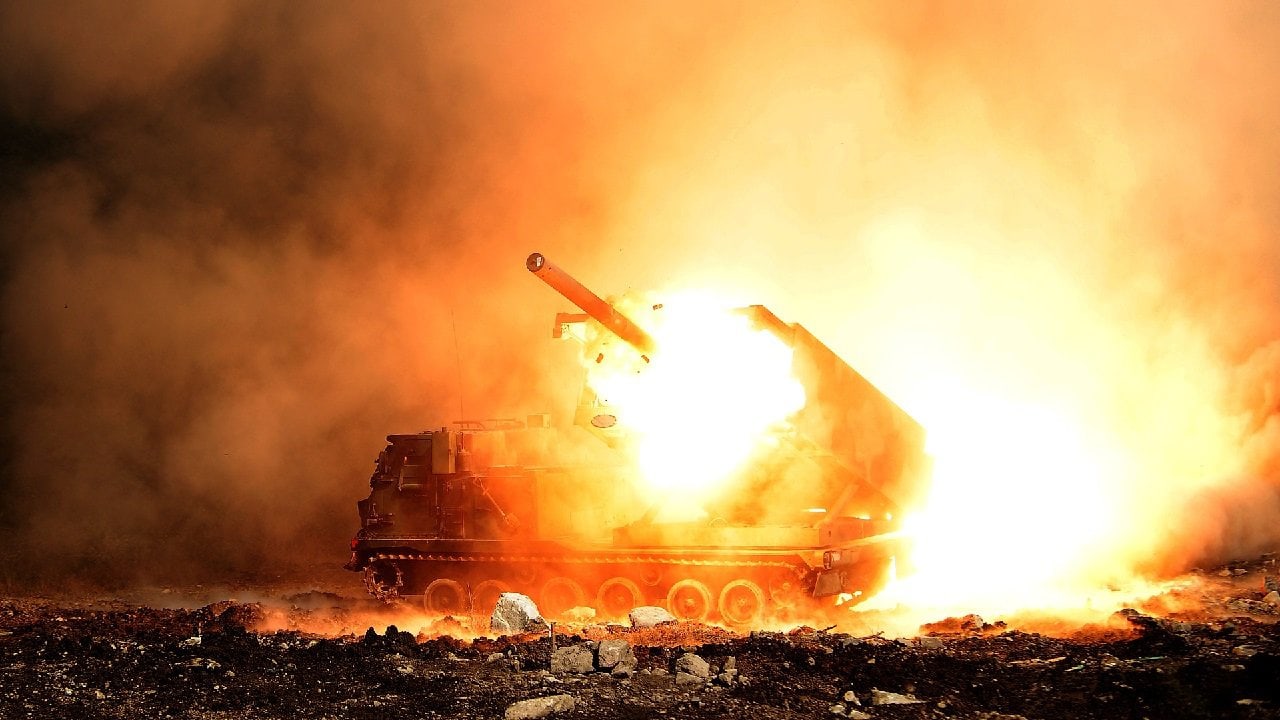Artillery Shortages Coming Soon to Ukraine War? The Ukrainian army is making progress in its counteroffensive. This week, open-source intelligence monitor Ukraine Weapons Tracker released footage covering the destruction of a Russian 2S7(M) Pion 203mm self-propelled howitzer.
The nearly minute-long video released on X (formerly Twitter) shows the results of a precision strike launched by Kyiv’s forces in Donetsk Oblast.
Artillery continues to play a dominant role in Ukraine. Referred to as the “God of War” by Joseph Stalin for its lethality, artillery is used heavily by both sides in the current conflict. Russia’s artillery supply, however, is rapidly dwindling.
Introducing Russia’s 2S7 Pion
The 2S7 Pion is a Soviet-era self-propelled cannon that was identified for the first time in the mid-1970s. Designed to engage remote enemy targets, the Pion has become an important component of Moscow’s offensive efforts in the war in Ukraine. Also referred to as “Malka,” the howitzer is fitted with a powerful 203mm gun and can fire ordinary chemical and nuclear shells. Upon the dissolution of the USSR in 1991, Pions were distributed among the former Soviet States. Although the 203mm ammunition is no longer produced anywhere in the world, Ukraine has reportedly discovered a way to adapt American-produced M106 203mm shells for their Pions. Both Kyiv and Moscow deploy these howitzers regularly.
Is Artillery Running Short for Both Sides?
An anonymous senior defense intelligence official told Newsweek that while Russia had the artillery advantage at the outset of its invasion, it is now the side that is suffering the greatest losses.
In April, a sharp reduction in the number of artillery shells being fired led analysts to believe Moscow’s stockpile was depleted. Additionally, Forbes reported that as many as half of the shells used by Russian forces are visibly rusty and of poor quality. The U.S. and its NATO allies are also concerned about Kyiv’s existing artillery.
Kyiv Burning Through Its Ammo
Since the onset of the invasion, the U.S. alone had provided roughly 2 million 155mm artillery rounds. According to the Pentagon, the Defense Department is producing twice the amount of shells monthly that it had been in February 2022. Despite this sharp increase, Kyiv still needs additional ammunition. Last week, Secretary of Defense Lloyd Austin told CNN that “this is an artillery-intensive fight,” adding that “we’ve seen large amounts of artillery being employed on both sides of the fence. And so that puts a strain on the international supply of munitions, artillery munitions.”
As Kyiv’s counteroffensive continues to ramp up, howitzers will undoubtedly remain a key element of both sides’ strategies.
Maya Carlin, a Senior Editor for 19FortyFive, is an analyst with the Center for Security Policy and a former Anna Sobol Levy Fellow at IDC Herzliya in Israel. She has by-lines in many publications, including The National Interest, Jerusalem Post, and Times of Israel. You can follow her on Twitter: @MayaCarlin.
From 19FortyFive

